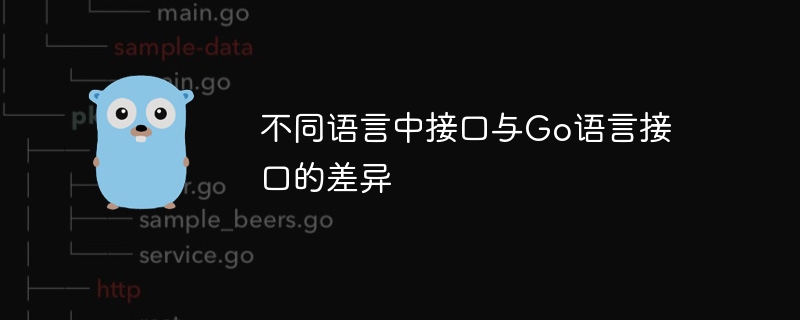

What is an interface?
An interface is an abstract concept that defines a set of methods or behaviors without defining the specific implementation of these methods. Interfaces allow programmers to define a common set of rules or contracts regardless of the underlying implementation.
Differences in interfaces in different languages
There are differences in the implementation of interfaces in different programming languages. The following are the interface features of some common languages:
interface keyword, similar to the interface in the Go language. interface keyword, but multiple inheritance is also supported. Interface in Go language
In Go language, interface is defined using interface keyword. They are similar to interfaces in other languages, but have the following unique features:
Practical Case: Animal Interface
Consider an example of an interface that defines animals and their behaviors:
type Animal interface {
// 获取动物的名称
Name() string
// 获取动物的年龄
Age() int
// 发出动物的声音
Speak() string
}We can create implementations of this interface Different animal types:
type Dog struct {
name string
age int
}
func (d Dog) Name() string { return d.name }
func (d Dog) Age() int { return d.age }
func (d Dog) Speak() string { return "Woof!" }
type Cat struct {
name string
age int
}
func (c Cat) Name() string { return c.name }
func (c Cat) Age() int { return c.age }
func (c Cat) Speak() string { return "Meow!" }By using interfaces, we can treat different types of animals as a whole with common behaviors, and can easily group or compare them without knowing their specific implementation .
The above is the detailed content of Differences between interfaces in different languages and Go language interfaces. For more information, please follow other related articles on the PHP Chinese website!




